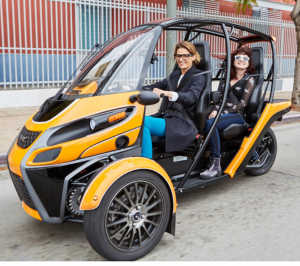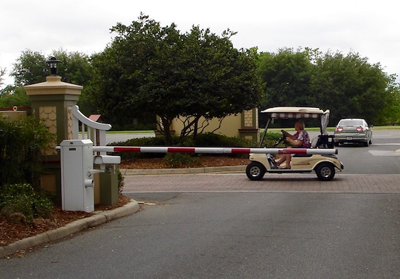Mobility Technology in Transition: The Search for the Right Fit
I and my associates at Small Vehicle Resource have been diligently tracking the rapidly developing urban/suburban mobility market. Basically, three trends appear to be driving this market on the demand side: 1) Cities and municipalities seeking to reduce the carbon footprint of vehicle traffic, and 2) Reduce congestion at the same time; while, 3) Increasing the efficiency of getting from point A to point B.
 The recently announced Cruise Origin self-driving vehicle that GM plans to start building in 2022.
The recently announced Cruise Origin self-driving vehicle that GM plans to start building in 2022.
Climate change meets the corona virus
Up to this point the objectives regarding urban/suburban mobility rested on the three points just listed. With the corona virus pandemic, and its devastation of urban areas in particular, a distinctively different variable has entered the picture.
Cities and municipalities were bent on excluding personal vehicles and promoting greater use of mass transit. In light of social distancing regimens invoked now to control the spread of the disease—and the future preventive measures against pandemics that are likely to emerge—mass transit is hardly the option it once was, nor likely to be. Paradoxically, modes of personal, individualized mobility are far safer than mass transit. Even the small, but confined space Cruise pictured above would need a “sanitizing” protocol to be fully safe, but the process is likely to much simpler and more effective than mass transit in the form of commuter buses and trains.
Potential for reverse migration from cities to more dispersed suburban locations
The scope of the corona virus pandemic could well lead to a reverse migration to the suburbs as was so prevalent in the 60s and 70s. Until just recently cities were touting a rebirth in vitality on the energies of Generation Xers seeking the diversity of entertainment and business and the social interconnectedness that cities offered. In light of what is happening now these attractions may not be so compelling.
Dispersed living at considerable distance from the tradition workplace (which becomes progressively more virtual) is not only feasible, but becomes desirable and with market value.
A step further to make the case. If ever a crisis bred new ways to work and communicate in and for work, it is this one. It is not that teleconferencing, voice conferencing, remote schooling, webinars, podcasts, and online ordering did not exist before the pandemic. All these technologies were available, but the pressure of the pandemic has moved these technologies to the forefront of survival. As a result they are being used more intensively, and at the same time more extensively—that is to say, the mass of individuals who never used, or rarely used, any one of these technologies has had to do so now. This new mode of living is unlikely to be reversed. The upshot of this is that dispersed living at considerable distance from the tradition workplace (which becomes progressively more virtual) is not only feasible, but desirable with market value.
In this context, a wide number of mobility technologies and applications will find a market. My colleague, Marc Cesare, has posted a comprehensive overview of the technologies and the mobility types that are on the cutting edge. To read his article in full got to the Small Vehicle Resource site at www.smallvehicleresource.com and click on the drop down over the carousel in the upper right. Click on “New Mobility Technology Challenges PTVs”.
I will cite excerpts from his article below.
What’s new on wheels and coming to your garage?
As Marc notes, “This technology is wide ranging from electric skateboards and electric bikes to three-wheeled and larger autonomous vehicles.” So what are these in more detail? Here from Marc’ article:
Electric Bikes & Scooters
The gated and vacation community skews older so skateboards are probably out, and at first glance electric bikes and electric scooters (Vespa like) may not seem to make sense. However, electric bikes and scooters can offer a slice of the market an alternative transportation experience. An electric pedal assist bike can provide exercise without as much exertion as a traditional bike… Scooters offer an alternative to PTVs for quick single or two-person trips. This technology can also be applied in the form of a bike or scooter share program, providing access to the whole community. A share program would seem well-suited to a planned community.
Three-wheelers & Autonomous Vehicles
 The electric powered Arcimoto Fun Utility Vehicle (FUV) is just coming to market.
The electric powered Arcimoto Fun Utility Vehicle (FUV) is just coming to market.
On the other end of the spectrum you have larger multi-passenger vehicles that provide a more direct competition to existing PTVs. Marc notes, “Vehicles like the FUV can carry two passengers or one with cargo.” Moreover, “As a three-wheeler, the FUV can operate at higher speeds and has no restrictions for venturing outside of communities on public roads. [While] at the same time, this vehicle can be speed limited for golf course and planned community use.”
Marc goes on to indicate the pros and cons of these vehicles:
Pros
With the ability to travel from golf course to community roads to public roads, the three-wheeled vehicle offers greater versatility than PTVs. Capable of higher speeds, it also has greater functionality than PTVs for certain use scenarios. For autonomous vehicles, the low-speed, well-defined and relatively limited planned community road networks offer an ideal environment. For residents less inclined or capable of driving a PTV, they provide a method to maintain mobility.
Cons
The FUV is currently much more expensive than PTVs and even LSVs. Therefore, customers may not find the increased versatility and functionality worth the price. They also are limited to two passengers, and as a result are less useful for family outings. For autonomous vehicles the technology is still in the development phase. In addition, some customers may prefer the convenience, customization and the statement made by owning a PTV. Furthermore, the cost of this type of service is not currently known.
New Players, investment & disruptive innovation: What you PTV manufacturers faces in the new market of suburban/urban mobility
 Harley Davidson electric bicycles
Harley Davidson electric bicycles
For PTVs we in the gated community are familiar with the Big Three, Club Car, E-Z-GO, and Yamaha, along with others that have strong competitive products (STAR, Tomberlin), but are facing important choices going forward, if they are going to be part of the new mobility market. As Marc notes,
“An additional aspect of urban and micro mobility that PTV manufacturers must contend with is the increased number of market players, capital investment and disruptive product innovations that the technology brings. For example, Harley Davidson and Jeep have revealed at least prototype electric bikes. Completely new companies like Arcimoto have entered the market. Tech companies like Alphabet (Google) and traditional auto manufacturers are developing highly sophisticated autonomous vehicle technology. In addition, you have ride share companies.”
Start-ups like Rad Power Bikes energize the market
Rad Power Bikes, is an example of the type of start-up in the urban mobility space that is energizing the market. The company produces a wide range of e bikes suited for personal transportation and as commercial delivery vehicles. EWheels is another startup specializing in a wide range of electric scooter, as well as e bikes. The company focuses on three-wheeled and four-wheeled scooters. Space does not permit more details on these kinds of manufacturers, but a future column will do so.
Marc points out some of the issues and some of the strengths the Big Three might have in this market: “PTV manufacturers are potentially at a disadvantage because they have neither the focus of disruptive startups nor the financial resources of much larger companies. On the other hand, they do possess strong knowledge of the market and a distribution network to serve the market. They also have experience in developing and manufacturing electric vehicles in a highly competitive environment.”
Small Vehicle Resource will be vetting this market and its potential more and more during 2020, so stay tuned. Your comments and perspectives are welcomed.



